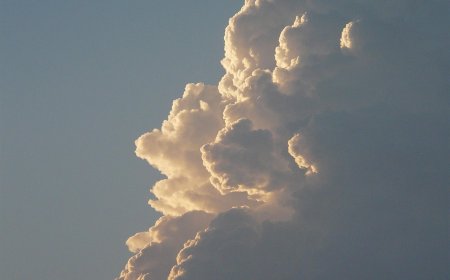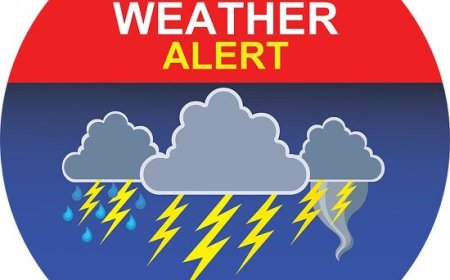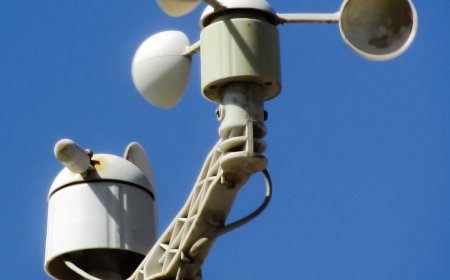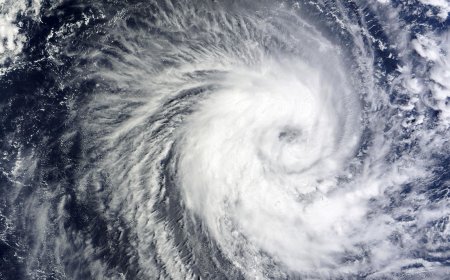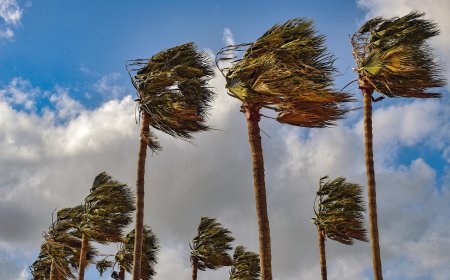How Weather Forecasting Works | Tools Meteorologists Use to Predict Weather
Explore how weather forecasts are made, the tools used by meteorologists, and how predictions help keep us safe. A complete student guide to weather forecasting.
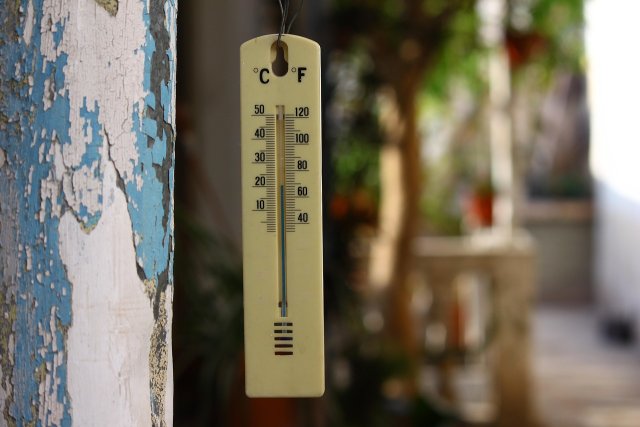
🧭 Introduction
Have you ever wondered how your local news knows when it’s going to rain, snow, or be sunny? That’s thanks to weather forecasting—the science of predicting the weather before it happens. Scientists who do this work are called meteorologists, and they use a mix of technology, math, and observation to make accurate forecasts. Weather forecasting helps people plan their day, stay safe during storms, and protect farms, flights, and schools. Let’s explore how forecasting works and the tools that make it possible.
🌤️ What Is Weather Forecasting?
Weather forecasting is the process of studying weather conditions to predict what the weather will be like in the near future. This might be a short-term forecast (for the next few hours or days) or a long-range forecast (for weeks ahead).
Forecasts help people:
Know if they need an umbrella or sunscreen
Prepare for storms or dangerous weather
Make decisions about travel, farming, and events
Meteorologists look at what is happening in the atmosphere right now and use that data to figure out what is likely to happen next.
🧪 How Do Meteorologists Forecast the Weather?
Forecasting combines observations, models, and technology. Here's the basic process:
Collect current weather data from many places (land, sea, and sky)
Use computers to plug data into forecast models—special programs that simulate the atmosphere
Study weather maps, patterns, and past events
Make predictions about temperature, wind, clouds, rain, and more
Share the forecast through TV, radio, apps, and websites
The more data meteorologists have, the more accurate their forecast will be!
🛰️ Tools Used in Weather Forecasting
Meteorologists use many tools to observe the weather:
Thermometers – Measure temperature
Barometers – Measure air pressure
Hygrometers – Measure humidity
Anemometers – Measure wind speed
Rain gauges – Measure rainfall
Weather balloons – Carry instruments high into the sky to collect upper-atmosphere data
Satellites – Orbit Earth and take pictures of clouds, storms, and heat patterns
Doppler radar – Detects storms, tornadoes, and rainfall by bouncing waves off clouds and precipitation
All of these tools help meteorologists track what’s happening now and what might come next.
🗺️ What Is a Weather Map?
A weather map shows information about current or predicted weather in a specific area. Maps include symbols and colors for:
Temperature zones
Cloud coverage
Rain or snow
High and low pressure systems
Fronts – boundaries between warm and cold air
Meteorologists read these maps to see how weather systems are moving and changing.
🌀 Forecast Models: The Science Behind Predictions
Computers run special programs called forecast models that use math to simulate the atmosphere. These models are built on:
Equations that explain how air moves and changes
Data from millions of observations
Patterns based on years of weather history
Meteorologists compare different models (like the GFS and ECMWF) to make the best guess about what’s coming. While no model is perfect, they improve with more data and better computers.
🌧️ Why Forecasting Is Important
Weather forecasts help:
Warn people of dangerous storms (tornadoes, hurricanes, blizzards)
Protect crops and livestock on farms
Plan air travel and avoid storms
Keep schools and events safe
Save lives during natural disasters
Without forecasting, we wouldn’t know when to take shelter or prepare for emergencies.
🧠 How Accurate Are Weather Forecasts?
Forecasts are best for the next 1–3 days. Accuracy gets lower the farther ahead you go.
1-day forecast – 90–95% accurate
3-day forecast – About 85% accurate
7-day forecast – Around 70% accurate
Beyond that – harder to predict, because weather is always changing!
Still, meteorologists are improving predictions with better technology and teamwork around the world.
📚 Vocabulary Words
Word Definition
Forecast A prediction of future weather
Meteorologist A scientist who studies and predicts weather
Barometer A tool that measures air pressure
Satellite A machine in space that takes pictures and collects weather data
Weather model A computer program that helps predict weather patterns
💡 Interesting Facts About Weather Forecasting
The word "meteorology" comes from the Greek word "meteoron," meaning things in the sky.
The first daily weather forecasts appeared in newspapers in the 1800s.
Weather balloons can rise over 100,000 feet into the atmosphere!
NASA satellites send back gigabytes of data every day for forecasting.
Birds and animals can often sense changes in pressure before storms arrive.
👧 Kid-Friendly Summary
Weather forecasting helps us know if it will rain, snow, or be sunny. Scientists called meteorologists collect data from tools like thermometers, satellites, and radar. They use computers and maps to predict what the weather will do next. This helps people stay safe and plan their day. Forecasting is like solving a puzzle about the sky!
✅ Interactive Quiz
Q1: Who studies and predicts the weather?
A. Astronaut
B. Meteorologist ✅
C. Geologist
D. Biologist
Q2: What tool measures air pressure?
A. Thermometer
B. Rain gauge
C. Barometer ✅
D. Anemometer
Q3: What do satellites do in weather forecasting?
A. Take water samples
B. Measure wind on the ground
C. Take pictures from space ✅
D. Dig in the soil
Q4: What is a weather forecast?
A. A weather report from last year
B. A guess about past weather
C. A prediction of future weather ✅
D. A photo of the sky
Q5: How long is a weather forecast most accurate?
A. 10 days
B. 1–3 days ✅
C. 3 weeks
D. 1 month
Scoring:
5/5 = 📡 Forecasting Pro
3–4 = 🌤️ Weather Watcher
1–2 = 📘 Sky Learner
Q4: Where is "Hail Alley" located?
A. California
B. Florida
C. Central U.S. ✅
D. Alaska
Q5: What should you do during a hailstorm?
A. Go outside and collect hail
B. Stay indoors and away from windows ✅
C. Take a shower
D. Turn on fans
Scoring:
5/5 = 🧊 Hail Hero
3–4 = 🌧️ Storm Watcher
1–2 = 📘 Weather Learner


















































